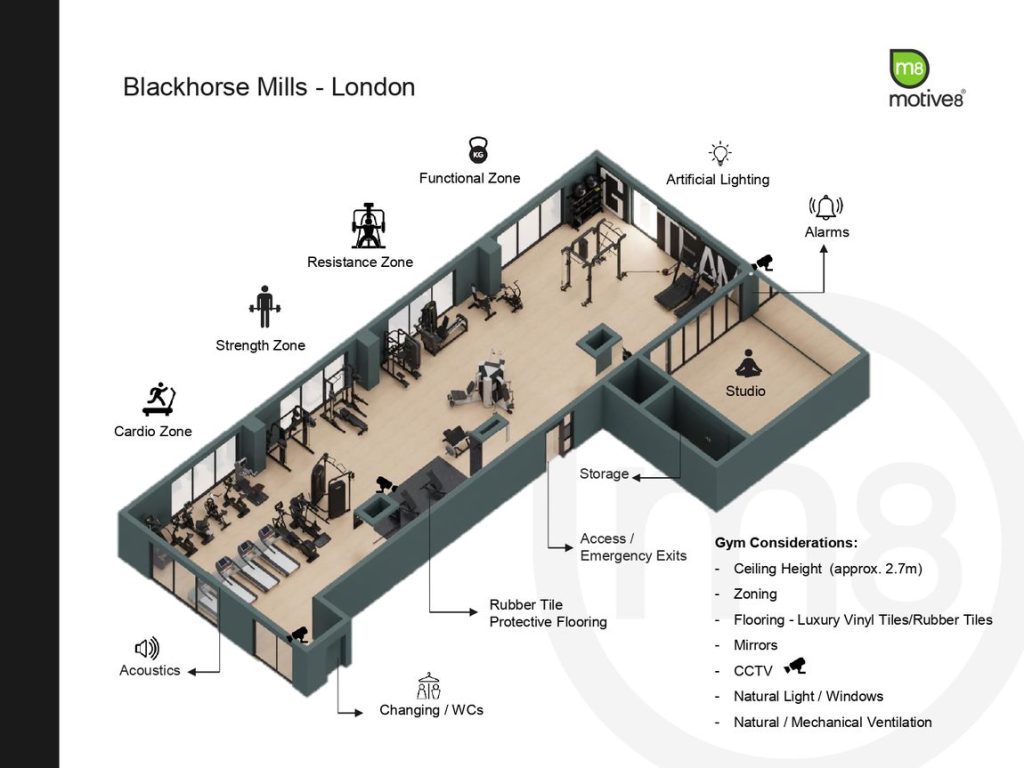Leisure facilities in Build to Rent developments provide a desirable amenity space which can help developers build a community feeling by engaging with like-minded residents.
Leisure facilities can also act as a unique selling proposition (USP) by providing amenities that competing developments don’t have.
It can also allow investors to charge a premium on the rent, over and above the extra cost of installing a facility.
Finally, it will improve the overall wellbeing and happiness of residents, and happy residents can translate into longer tenancies.
What leisure facilities do residents want and what are the advantages and disadvantages of each?
| FACILITY TYPE | ADVANTAGES | DISADVANTAGES |
| GYM |
|
|
| POOLS & SPAS |
|
|
| GROUP EXERCISE |
|
|
| LOUNGE AREAS |
|
|
| CINEMAS |
|
|
Design considerations

A well-designed gym can be very popular with residents but can also take up a large amount of space
Cost analysis and forecasting
The costs below are based on a mid-high specification of gym equipment from a leading manufacturer, supplied by motive8.
| PROJECT A | PROJECT B | |
| Total number of apartments | 250 | 750 |
| Gross cost to buy equipment | £108,000 | £195,000 |
| Size of gym (sqm) | 150sqm | 280sqm |
| Gross cost per sqm of gym space | £720 | £696 |
| Gross monthly cost based on a 60-month lease | £2,250 | £4,100 |
| Cost per apartment per month | £9 | £5.50 |
Operation of leisure facilities
With all elements of the operation of any facility, it is important to ensure the service provider who is being promoted to residents is up to the task of delivering the service required and that they, or their team, have the required qualifications, experience and insurances.
Partnering with a reputable company might be marginally more expensive than a local “one-man-band” trainer, but it will provide peace of mind that the facility and the residents are in safe hands.
Gyms
Inductions: Considered best practice to ensure safe use of equipment by residents and to ensure they get the most out of their gym facility
Maintenance: Minimum bi-annual servicing of equipment
Personal training: Great additional service to offer residents; try to refrain from allowing residents to bring their own trainers as the management of this becomes problematic and there are grey areas over liability
Classes and events: A cost-effective way to provide group activities for like-minded residents, for example running clubs, outdoor yoga
Swimming pools and spas
User safety: Complex guidance over safety requirements of a pool relating to whether lifeguards are or aren’t required along with the various design and operational requirements
Staff training: Staff who are designated “on-call” must be pool responder and first aid trained. There should also be an on-site staff member who is competent in pool plant
Maintenance: Varies depending on usage but, generally speaking, weekly service visits should suffice. However, water testing is required at least three times per day on a pool and every two hours on a spa pool
Water testing: Minimum three times per day on a pool and more frequently (up to every two hours) on a spa pool
Sauna & steam room: Different councils have differing requirements on their management; refer to the relevant special treatment licence terms